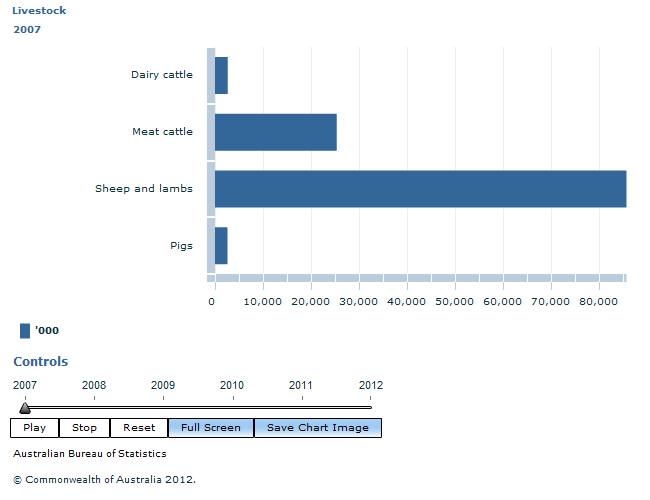7111.0 - Principal Agricultural Commodities, Australia, Preliminary, 2011-12  Quality Declaration
Quality Declaration
ARCHIVED ISSUE Released at 11:30 AM (CANBERRA TIME) 15/11/2012
Page tools:
 Print Page Print Page
 Print All Print All
| ||
 Footnote(s): (a) Data for 2011 are preliminary and may be subject to revision Source(s): Principal Agricultural Commodities, Australia, Preliminary (cat. no. 7111.0) Document Selection These documents will be presented in a new window.
|
||
